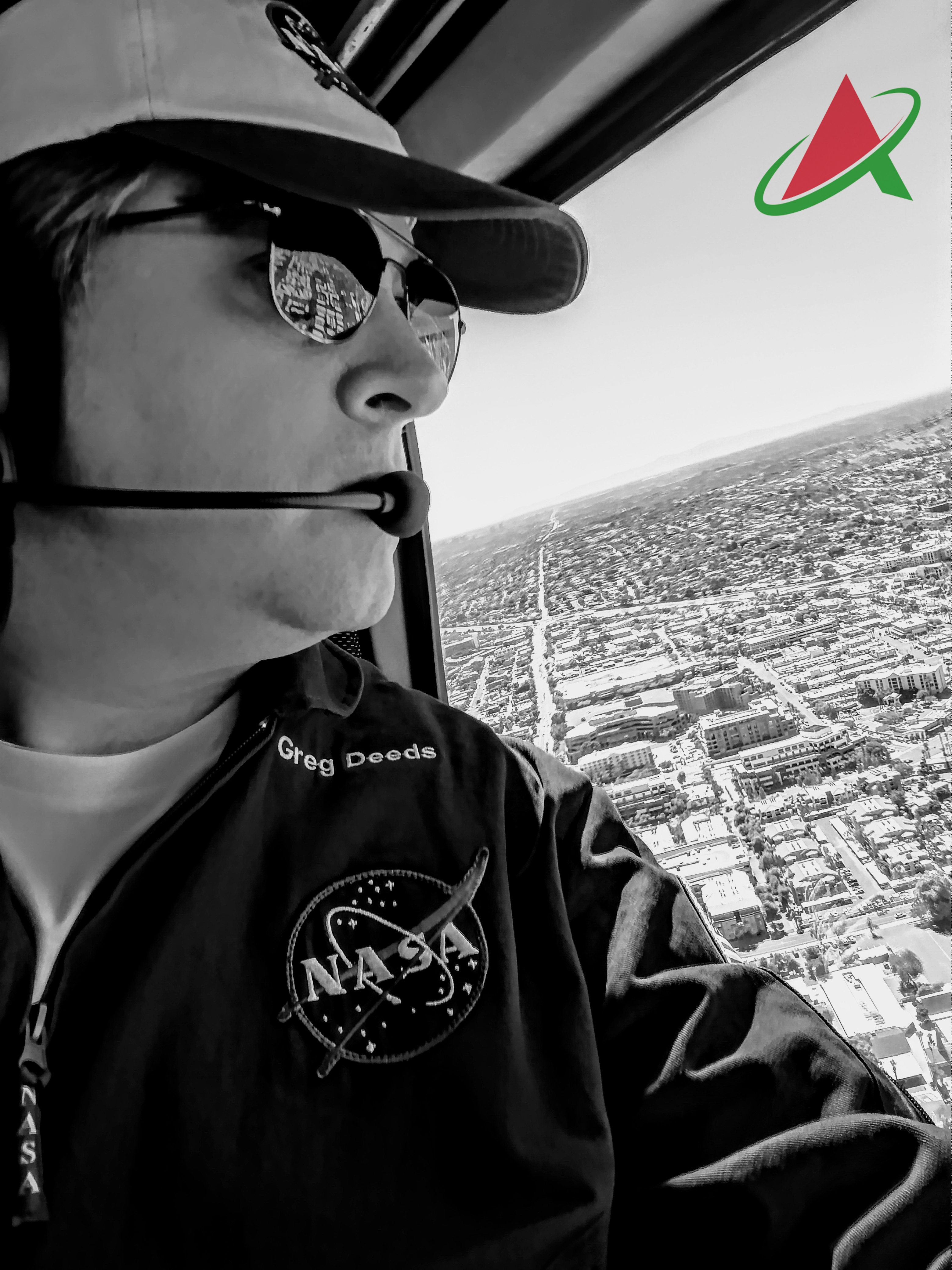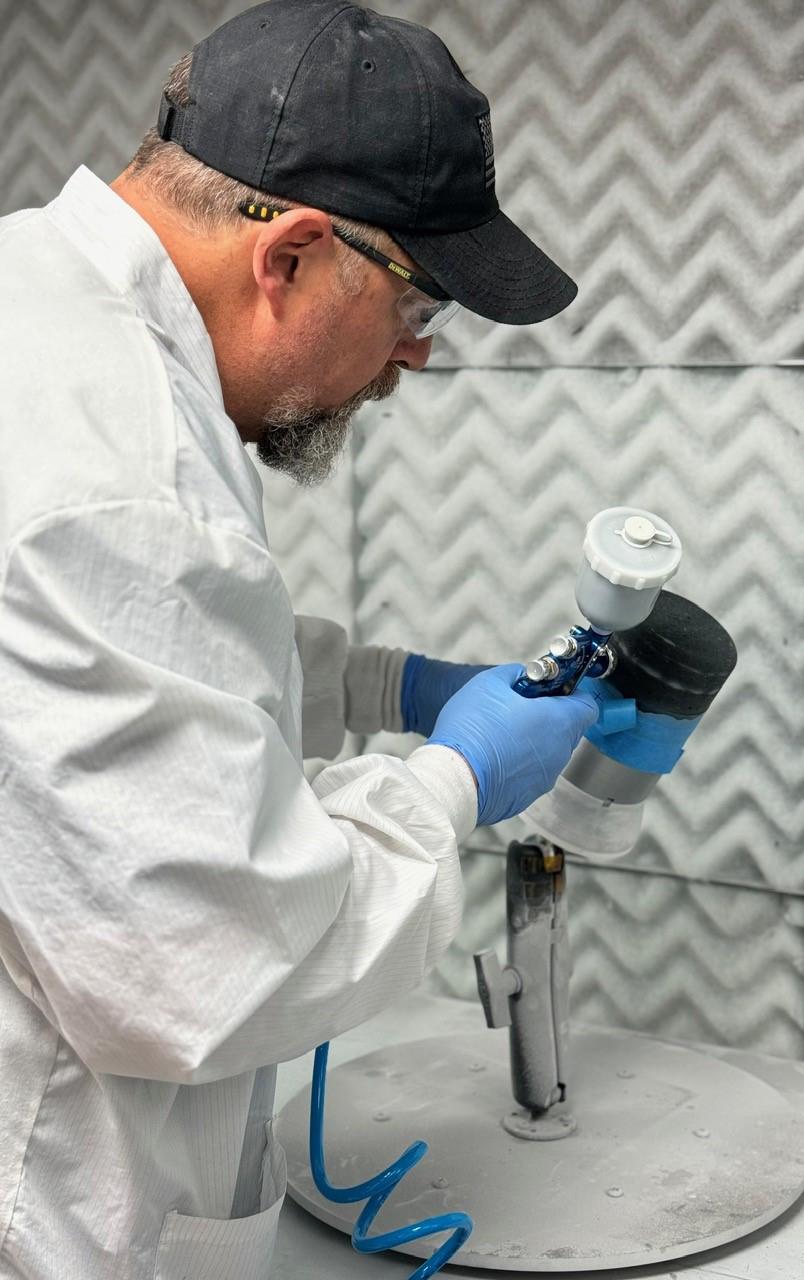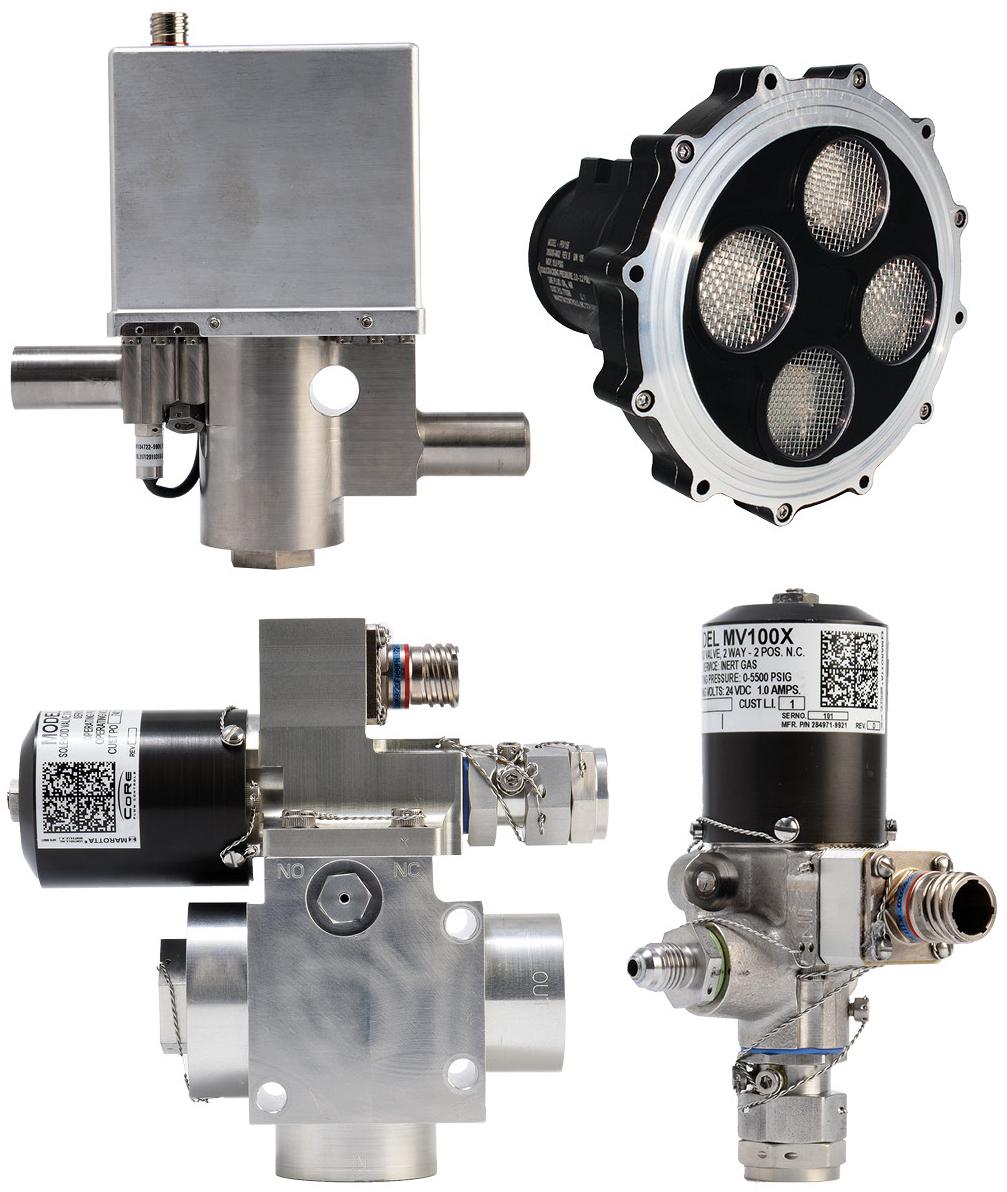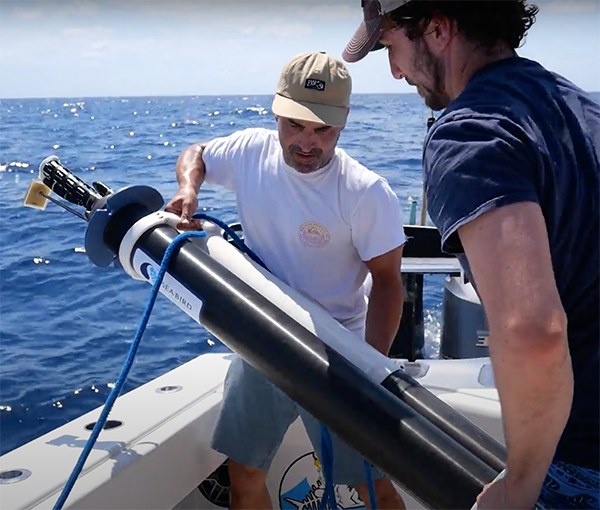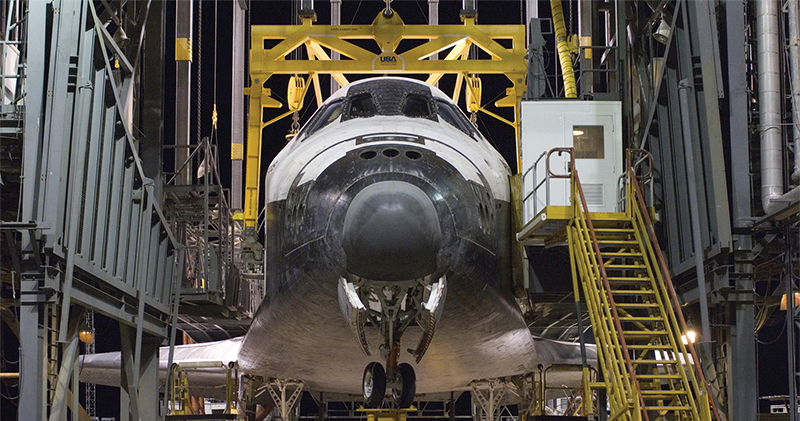
Shuttle Repair Tools Automate Vehicle Maintenance
NASA Technology
Successfully building, flying, and maintaining the space shuttles was an immensely complex job that required a high level of detailed, precise engineering. After each shuttle landed, it entered a maintenance, repair, and overhaul (MRO) phase. Each system was thoroughly checked and tested, and worn or damaged parts replaced, before the shuttle was rolled out for its next mission.
During the MRO period, workers needed to record exactly what needed replacing and why, as well as follow precise guidelines and procedures in making their repairs. That meant traceability, and with it lots of paperwork.
In 2007, the number of reports generated during electrical system repairs was getting out of hand—placing among the top three systems in terms of paperwork volume. Repair specialists at Kennedy Space Center were unhappy spending so much time at a desk and so little time actually working on the shuttle. “Engineers weren’t spending their time doing technical work,” says Joseph Schuh, an electrical engineer at Kennedy. “Instead, they were busy with repetitive, time-consuming processes that, while important in their own right, provided a low return on time invested.”
The strain of such inefficiency was bad enough that slow electrical repairs jeopardized rollout on several occasions. Knowing there had to be a way to streamline operations, Kennedy asked Martin Belson, a project manager with 30 years experience as an aerospace contractor, to co-lead a team in developing software that would reduce the effort required to document shuttle repairs. The result was System Maintenance Automated Repair Tasks (SMART) software.
SMART is a tool for aggregating and applying information on every aspect of repairs—from procedures and instructions to a vehicle’s troubleshooting history. Drawing on that data, SMART largely automates the processes of generating repair instructions and post-repair paperwork. In the case of the space shuttle, this meant that SMART had 30 years’ worth of operations that it could apply to ongoing maintenance work.
According to Schuh, “SMART standardized and streamlined many shuttle repair processes, saving time and money while increasing safety and the quality of repairs.” Maintenance technicians and engineers now had a tool that kept them in the field, and because SMART is capable of continually evolving, each time an engineer put it to use, it would enrich the Agency-wide knowledge base. “If an engineer sees something in the work environment that they could improve—a repair process or a procedure—SMART can incorporate that data for use in future operations,” says Belson.
Technology Transfer
Knowing that the Space Shuttle Program would be ending in several years, Belson decided in 2007 to start planning for life after NASA. He spent his spare time building a business, eventually incorporated as Orlando, Florida-based Diversified Industries (DI) C&IS Inc., with the long-term goal of applying the expertise he gained at NASA to commercial products.
In 2010 Belson retired from NASA, and DI was accepted into the University of Central Florida’s Business Incubator Program. Belson then reached out to Kennedy’s Technology Transfer Office to discuss moving NASA’s SMART software into the private sector, which he says was met with great encouragement.
NASA filed a patent for SMART in 2007, and in 2011 it granted DI a license on the product. Now licensed, and armed with his intimate knowledge of the program, Belson adapted the software for general aviation, including commercial and military markets.
Benefits
SMART is primarily a discrepancy resolution and unplanned maintenance tool that automates many of the steps required to determine the correct action for a specific repair. The software draws on a preapproved library of repair procedures to guide technicians, providing them with a decision tree that lists a sequence of predefined actions, tools, parts, and materials appropriate for a given problem.
Belson says that a typical commercial airplane flies for 5–6 years before it enters its MRO phase. At that point, the entire craft is inspected in great detail, with many of its components being repaired or entirely replaced before the airplane is rolled out again. While roughly 60 percent of the routine maintenance can be anticipated well ahead of time, about 40 percent of problems aren’t known until the systems and components are inspected and tested.
DI targets that unpredictable segment of repairs with SMART, emphasizing the improvements in work times that it can offer in both simple and complex environments. In a test conducted by NASA—requiring five certified shuttle technicians of varying skill levels and experience to make four different kinds of repairs, both with and without the help of SMART—the software cut repair disposition times by an average of 45 percent.
Belson’s modifications to SMART allow it to fit within existing MRO infrastructures. Just as the software incorporated 30 years of shuttle repairs for NASA, SMART can quickly adapt to the technical standards of various organizations and markets, such as commercial airlines, aerospace vehicles, industrial machinery, ships, and military ground vehicles, helicopters, and weaponry. Technicians in the field can even run SMART on mobile devices, making its benefits available in any situation.
While the time and paperwork savings may make engineers’ lives easier and cut down on costs, Belson is also quick to point out that SMART offers real improvements to safety as well. Since the program can intelligently manage repairs by turning to a rich data set of accepted procedures, it ensures that technicians are applying the right tools for the job at hand, cutting down on mistakes due to inexperience or errors in judgment and decision making.
Belson’s proactive approach to technology transfer is paying off for some of his former NASA colleagues. Thanks to SMART’s smooth transition from Agency solution to commercially available software, DI has started hiring engineers who used to work on the shuttle fleet and is putting their expertise in the software to use in the private sector.
Though the Space Shuttle Program has officially ended, entrepreneurs like Belson are demonstrating how the program continues to repay the American public for its investment. “We’re excited to be able to take something that taxes paid for and use it to produce a quality product,” he says. “This is an area where commercial airlines are in pain. We can offer them a solution that saves them money and introduces greater safety for the general public.”
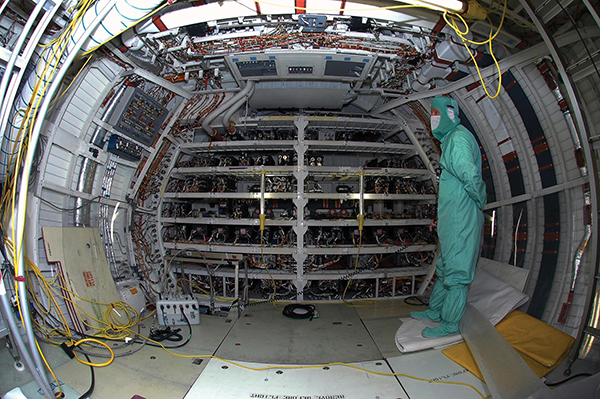
Before SMART, repairs to the shuttle’s electrical system were taking too much time and generating an enormous amount of paperwork—on several occasions jeopardizing the MRO schedule. The benefits offered by the software can make an immediate impact in commercial and military aviation markets.
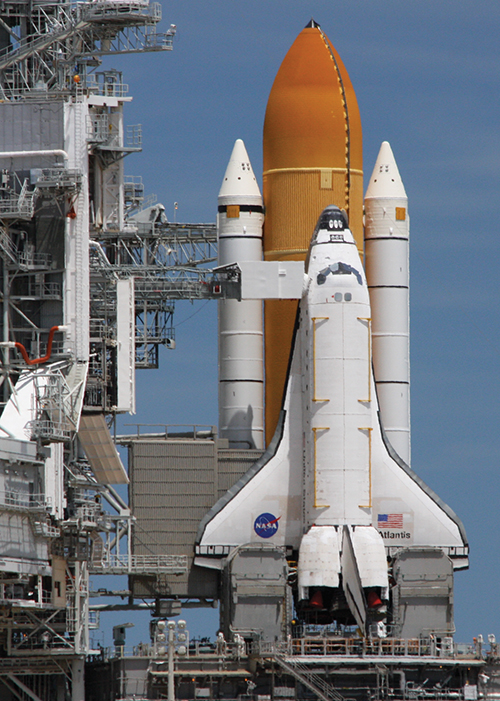
Each space shuttle required a full maintenance, repair, and overhaul (MRO) phase before flying its next mission.

The space shuttle during its MRO phase.




